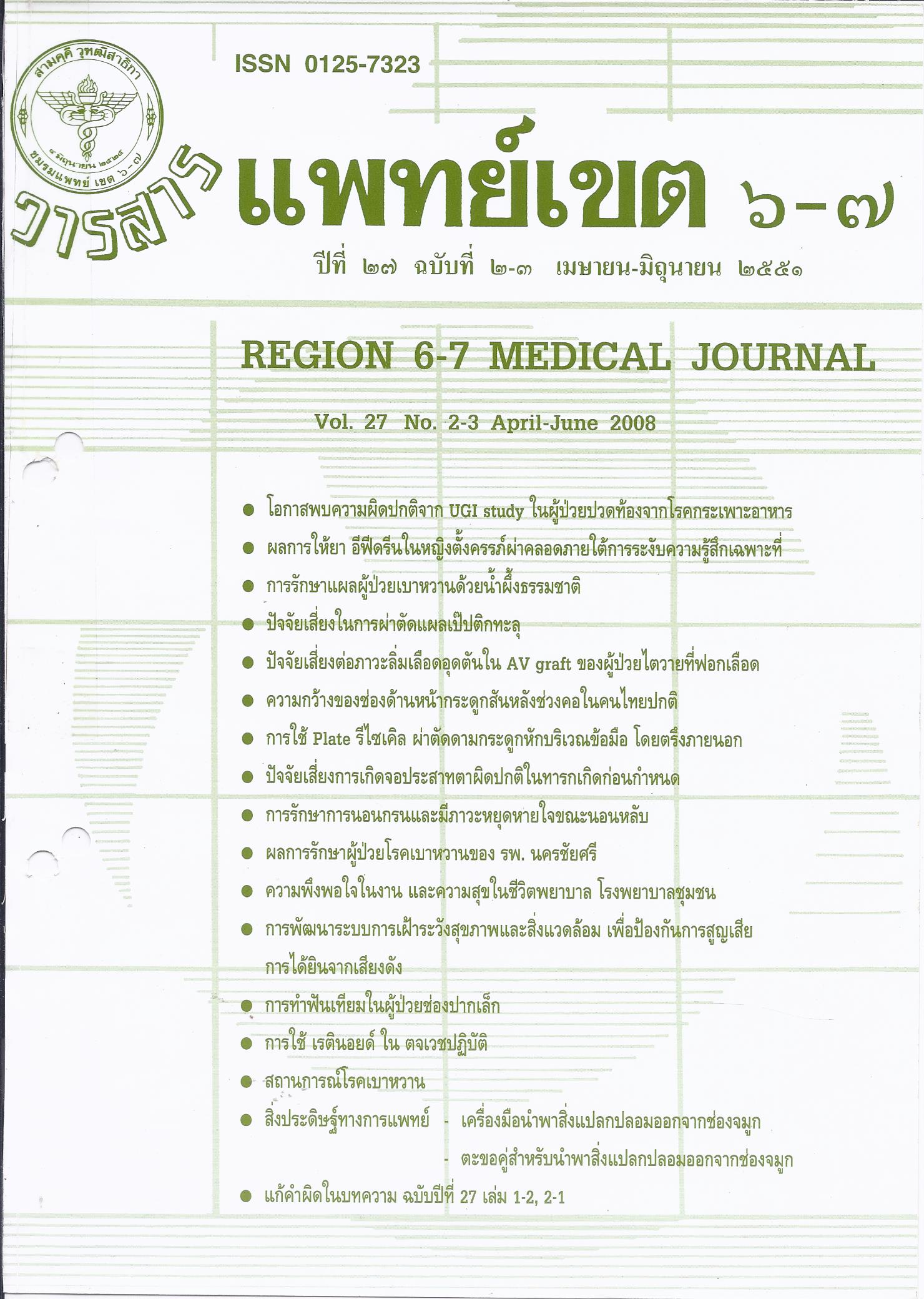อุบัติการณ์และปัจจัยเสี่ยงของการเกิดโรคจอประสาทตาผิดปกติในทารกเกิดก่อนกำหนด โรงพยาบาลเจ้าพระยายมราช
บทคัดย่อ
This prospective descriptive and analytic study was to determine the incidence and potential risk factors of retinopathy of prematurity (ROP) among premature infants with a birth weight ≤ 2,000 grams and/or with a gestational age less than 37 weeks who was born and admitted in neonatal intensive care unit at Chaoprayayommaraj Hospital between January 2005 to December 2007. The premature infants were first examined for retinopathy of prematurity at 4-6 weeks of postnatal age or alternatively, within the 31st - 33rd week of post-conceptlonal age (gestational age at birth plus chronological age) and then repeated every 1 week while they were admitted in hospital and every 2 weeks after discharged until complete vascularization of the retina. Univariate analysis using Mann-Whitney U-Test, Chi-Square and Fisher's Exact Test to identify the statistical significant risk factors, also used multivariate logistic regression analysis and ROC Curve to identify the most significant risk factors. Of the 271 screened infants, ROP was detected in 81 infants (29.9%). Among 81 infants ; 45 infants (55.5%) were classified in stage l, 28 infants (54.6%) in stage ll and 8 infants (9.9%) in stage lll. The highest incidence of ROP were those with birth weight less than 750 grams (100%) and gestational age ≤ 28 weeks (71.9%). The significant risk factors for development ROP were birth weight, gestational age, number of blood transfusions, duration of supplemental oxygen, duration of ventilation, high concentration of oxygen (FiO2) ≤ 0.7, respiratory distress syndrome, bronchopulmonary dysplasia, septicemia, patent ductus arteriosus and apnea of prematurity. In a stepwise multivariate logistic regression analysis, however, only birth weight ≤1,700 grams, high concentration of oxygen (FiO2) ≥0.7 and apnea of prematurity play the most significant role in the development of ROP in premature infants.
Conclusion : The incidence of ROP was increased in preterm with very low birth weight and low gestational age. ROP is considered a multifactorial and preventable disease. This data showed low birth weight ≤1,700 grams, high concentration of oxygen (FiO2) ≥ 0.7 and apnea of prematurity play the most significant role in the development of ROP in premature infants. Therefore, prevention of prematurity, judicious use of ventilation and oxygen therapy and using standard treatment may reduce the incidence and severity of ROP in this high-risk infants.
ดาวน์โหลด
เผยแพร่แล้ว
รูปแบบการอ้างอิง
ฉบับ
ประเภทบทความ
สัญญาอนุญาต
ลิขสิทธิ์บทความเป็นของผู้เขียนบทความ แต่หากผลงานของท่านได้รับการพิจารณาตีพิมพ์ลงวารสารแพทย์เขต 4-5 จะคงไว้ซึ่งสิทธิ์ในการตีพิมพ์ครั้งแรกด้วยเหตุที่บทความจะปรากฎในวารสารที่เข้าถึงได้ จึงอนุญาตให้นำบทความในวารสารไปใช้ประโยชน์ได้ในเชิงวิชาการโดยจำเป็นต้องมีการอ้างอิงถึงชื่อวารสารอย่างถูกต้อง แต่ไม่อนุญาตให้นำไปใช้ในเชิงพาณิชย์




